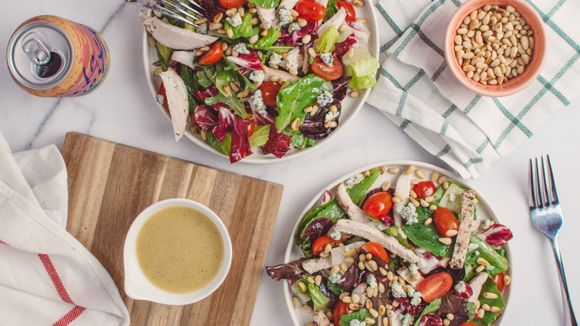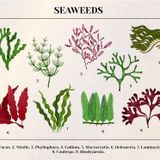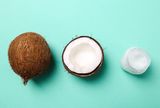The Science Behind the DASH Diet
The DASH Diet was developed as a result of groundbreaking research funded by the National Institutes of Health (NIH) in the United States. The diet focuses on consuming whole foods that are rich in nutrients, such as potassium, calcium, and magnesium, which are crucial for maintaining healthy blood pressure levels. Studies have shown that following the DASH Diet can significantly lower blood pressure in just two weeks (1).
Benefits for Specific Health Conditions and Diseases:
- Hypertension: As the name suggests, the primary goal of the DASH Diet is to lower high blood pressure. By emphasizing fruits, vegetables, whole grains, lean proteins, and low-fat dairy, the diet helps reduce the risk of hypertension-related complications, such as heart disease and stroke (2).
- Heart Disease: The DASH Diet is heart-friendly as it limits the intake of saturated fats and trans fats. These dietary changes can help lower LDL (bad) cholesterol levels, reduce inflammation, and improve overall cardiovascular health (3).
- Diabetes: The DASH Diet can help manage diabetes by promoting a balanced intake of carbohydrates, proteins, and fats. By focusing on whole foods and limiting processed sugars, individuals can better regulate their blood sugar levels (4).
- Weight Loss: The nutrient-dense foods in the DASH Diet can help individuals feel fuller for longer, thus reducing overall calorie consumption. This, in turn, can lead to weight loss and improved health (5).
- Kidney Disease: The DASH Diet's emphasis on reducing sodium intake can help prevent and manage kidney disease by reducing strain on the kidneys and improving overall kidney function (6).
Appel LJ, Moore TJ, Obarzanek E, et al. A clinical trial of the effects of dietary patterns on blood pressure. N Engl J Med. 1997;336(16):1117-1124. Chiu S, Bergeron N, Williams PT, Bray GA, Sutherland B, Krauss RM. Comparison of the DASH (Dietary Approaches to Stop Hypertension) diet and a higher-fat DASH diet on blood pressure and lipids and lipoproteins: a randomized controlled trial. Am J Clin Nutr. 2016;103(2):341-347. Sacks FM, Svetkey LP, Vollmer WM, et al. Effects on blood pressure of reduced dietary sodium and the Dietary Approaches to Stop Hypertension (DASH) diet. N Engl J Med. 2001;344(1):3-10. Azadbakht L, Fard NR, Karimi M, et al. Effects of the Dietary Approaches to Stop Hypertension (DASH) eating plan on cardiovascular risks among type 2 diabetic patients: a randomized crossover clinical trial. Diabetes Care. 2011;34(1):55-57. Champagne CM, Broyles ST, Moran LD, et al. Dietary intakes associated with successful weight loss

Photo by Travis Yewell on Unsplash
Two DASH Diet Recipes
Chicken and Vegetable Stir-Fry
Ingredients:
- 1 lb boneless, skinless chicken breast, thinly sliced
- 2 cups broccoli florets
- 1 red bell pepper, thinly sliced
- 1 cup sliced mushrooms
- 1/4 cup low-sodium soy sauce
- 2 cloves garlic, minced
- 1 tbsp olive oil
- 1 tsp grated fresh ginger
- 1/4 tsp crushed red pepper flakes (optional)
Instructions:
- In a large skillet, heat olive oil over medium-high heat. Add chicken and cook until browned, about 4 minutes per side. Remove from skillet and set aside.
- Add broccoli, bell pepper, and mushrooms to the skillet. Cook for 5 minutes, stirring occasionally.
- In a small bowl, combine low-sodium soy sauce, garlic, ginger, and crushed red pepper flakes. Add the sauce to the skillet and cook for 2 minutes.
- Return the chicken to the skillet and cook for an additional 2-3 minutes or until heated through.
Quinoa and Black Bean Salad:
Ingredients:
- 1 cup quinoa, rinsed and drained
- 2 cups water
- 1 (15 oz) can black beans, rinsed and drained
- 1 cup cherry tomatoes, halved
- 1 small red onion, diced
- 1/2 cup chopped fresh cilantro
- 1/4 cup fresh lime juice
- 2 tbsp olive oil
- Salt and pepper, to taste
Instructions:
- In a medium saucepan, combine quinoa and water. Bring to a boil, then reduce heat to low, cover, and simmer for 15 minutes or until the quinoa is tender and the water has been absorbed.
- In a large bowl, combine cooked quinoa, black beans, cherry tomatoes, red onion, and cilantro.
- In a small bowl, whisk together lime juice and olive oil. Pour the dressing over the salad and toss to combine. Season with salt and pepper, to taste.

Photo by Simone Secci on Unsplash
Questions and Answers
Q: Can vegetarians follow the DASH Diet?
A: Yes, vegetarians can easily adapt the DASH Diet by focusing on plant-based protein sources such as legumes, tofu, and tempeh.
Q: Is the DASH Diet suitable for pregnant or breastfeeding women?
A: The DASH Diet can be suitable for pregnant and breastfeeding women, as it promotes a balanced and nutrient-rich diet. However, always consult your healthcare provider before making significant changes to your diet.
Q: Can I follow the DASH Diet if I have food allergies?
A: Yes, you can modify the DASH Diet to accommodate your food allergies by substituting allergy-friendly alternatives.
Q: Is it expensive to follow the DASH Diet?
A: While some fresh produce and lean proteins can be more expensive, the DASH Diet can be cost-effective if you focus on seasonal produce, bulk-buy whole grains, and choose more affordable protein sources like beans and legumes.
Q: Can I drink alcohol while following the DASH Diet?
A: The DASH Diet recommends limiting alcohol consumption, as excessive alcohol intake can increase blood pressure. Moderation is key: one drink per day for women and two drinks per day for men is considered acceptable.









